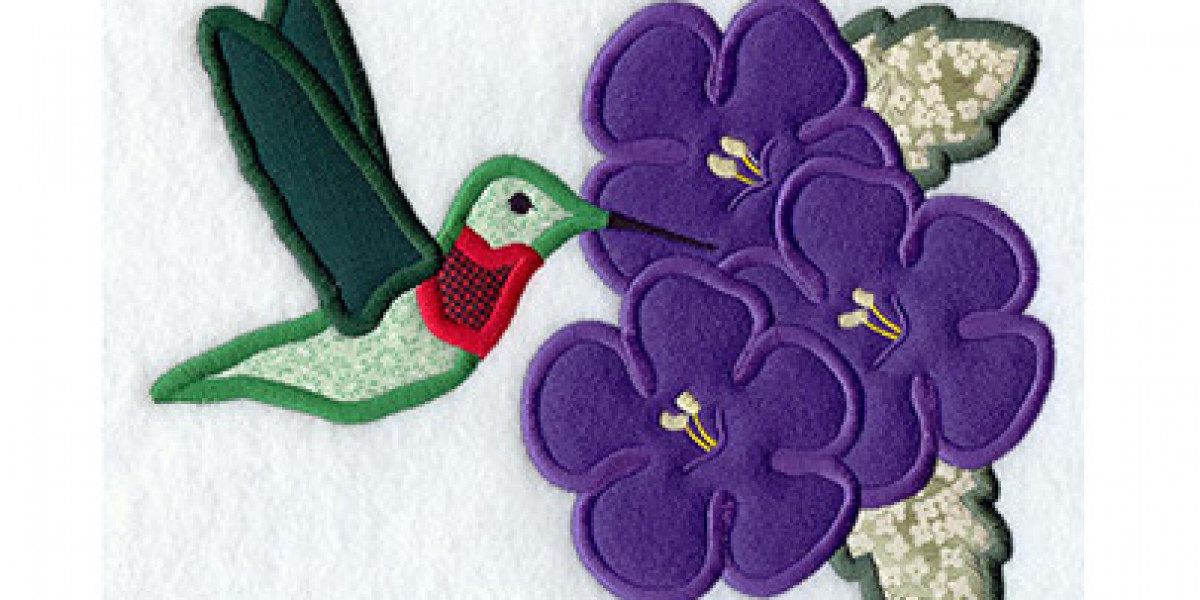Embroidery has evolved significantly over the years, with various techniques emerging to cater to different artistic and functional needs. Among these techniques, applique digitizing stands out for its unique approach to creating intricate designs. This guide will explore applique digitizing in detail, comparing it with other popular embroidery techniques, to help you understand the strengths and weaknesses of each.
What is Applique Digitizing?
Applique digitizing involves sewing a piece of fabric onto a larger fabric surface to create a design. The process begins with selecting a design, which is then digitized to create a file that can be read by an embroidery machine. Once the file is ready, the machine stitches the outline of the design onto the base fabric, after which the chosen fabric for the applique is placed over the outline. The machine then stitches around the edges of the applique fabric, securing it in place.
Benefits of Applique Digitizing
Design Versatility: Applique allows for a wide range of designs and textures. You can use different fabrics, colors, and patterns, which enhances the visual appeal of the final product.
Durability: Appliqued designs tend to be more durable than some other embroidery techniques. The fabric used in applique can withstand wear and tear, making it suitable for items like clothing and home decor.
Cost-Effectiveness: Because you are using fabric pieces instead of stitching every detail, applique can be a more economical option for creating large designs.
Speed of Production: Applique can often be faster to produce than traditional embroidery, especially for designs with large areas of color.
Comparison with Other Embroidery Techniques
1. Traditional Embroidery
Traditional embroidery involves stitching directly onto the fabric using various stitches like satin, fill, or running stitches. This method can create intricate designs but often requires a significant amount of time and skill.
Advantages of Traditional Embroidery
- Detail: Traditional embroidery can capture intricate details and textures that may be difficult to achieve with applique.
- No Fabric Layering: Since it involves only stitching, there is no need for additional fabric layers, resulting in a flatter finish.
Disadvantages of Traditional Embroidery
- Time-Consuming: Creating detailed designs with traditional embroidery can take a lot of time, especially for larger projects.
- Limited to Stitch Patterns: The range of designs is often limited to what can be achieved through stitching alone.
2. Digital Embroidery
Digital embroidery uses computerized machines to create designs directly onto fabric. This technique often utilizes a combination of traditional embroidery stitches and innovative designs made possible through digital software.
Advantages of Digital Embroidery
- Precision: Digital embroidery offers high precision, allowing for complex designs to be reproduced consistently.
- Speed: Once the design is digitized, the production process is incredibly fast compared to manual methods.
Disadvantages of Digital Embroidery
- Setup Costs: The initial costs for digitizing and machinery can be high, making it less accessible for small-scale operations.
- Limited Fabric Choices: Some digital embroidery techniques may struggle with thicker fabrics or those that fray easily.
3. Machine Quilting
Machine quilting involves sewing two or more layers of fabric together in a manner that adds decorative stitching to the surface. While similar to embroidery, quilting is primarily focused on joining layers rather than creating standalone designs.
Advantages of Machine Quilting
- Texture: Quilting adds texture and depth to fabric items, often enhancing their aesthetic appeal.
- Functionality: Besides decorative purposes, quilting is functional, providing warmth and durability to the finished product.
Disadvantages of Machine Quilting
- Complexity: Quilting patterns can be complex, requiring significant skill and time to create.
- Limited Design Focus: Unlike applique or embroidery that focuses on design, quilting is more about the construction of layers.
Practical Applications of Applique Digitizing
Applique digitizing is particularly popular in various sectors, including fashion, home decor, and promotional items. Here are some practical applications:
Fashion
In the fashion industry, applique is often used to add unique designs to garments. From children's clothing to high-fashion pieces, the versatility of applique allows designers to create standout items that can be personalized for a specific audience.
Home Decor
Applique is widely used in home decor items such as throw pillows, quilts, and wall hangings. The use of different fabrics can create visually stunning pieces that enhance any space.
Promotional Items
Businesses often use applique in promotional products like caps, bags, and jackets. The ability to feature a company logo prominently and stylishly makes applique a preferred choice for many businesses.
Choosing the Right Technique
When deciding between applique digitizing and other embroidery techniques, consider the following factors:
Project Type
The nature of your project plays a significant role in the choice of technique. For intricate designs requiring high detail, traditional or digital embroidery may be more suitable. However, for larger designs or those needing texture, applique may be the better option.
Fabric Choice
The type of fabric you are working with can influence your decision. Applique works well with heavier fabrics, while traditional embroidery may be better suited for lighter materials.
Time and Cost
Consider your budget and time constraints. Applique can be a more cost-effective and quicker option for larger designs, while traditional or digital embroidery may require more financial investment and time.
Skill Level
Your personal skill level can also influence your choice. If you are experienced in traditional embroidery, you may prefer that method. Conversely, if you are new to embroidery, applique digitizing could be more accessible.
Conclusion
Applique digitizing is a versatile and effective embroidery technique that offers distinct advantages over traditional and digital embroidery methods. While each technique has its strengths and weaknesses, the choice ultimately depends on your project requirements, fabric types, and personal preferences.
By understanding the nuances of applique digitizing in comparison to other embroidery techniques, you can make informed decisions for your projects, ensuring you achieve the desired results. Whether you're creating fashion pieces, home decor, or promotional items, knowing the right technique can elevate your work and make a lasting impression.










